BOXING The History of Boxing The history of


BOXING
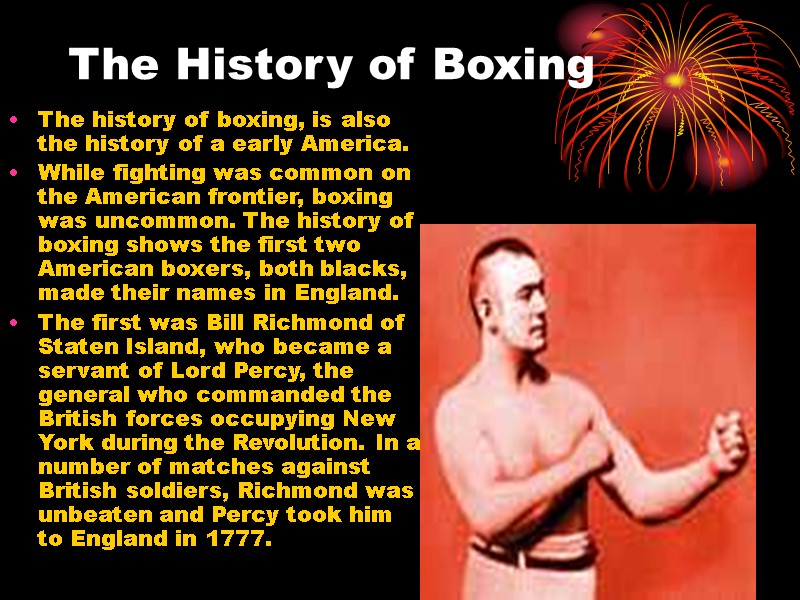
The History of Boxing The history of boxing, is also the history of a early America. While fighting was common on the American frontier, boxing was uncommon. The history of boxing shows the first two American boxers, both blacks, made their names in England. The first was Bill Richmond of Staten Island, who became a servant of Lord Percy, the general who commanded the British forces occupying New York during the Revolution. In a number of matches against British soldiers, Richmond was unbeaten and Percy took him to England in 1777.

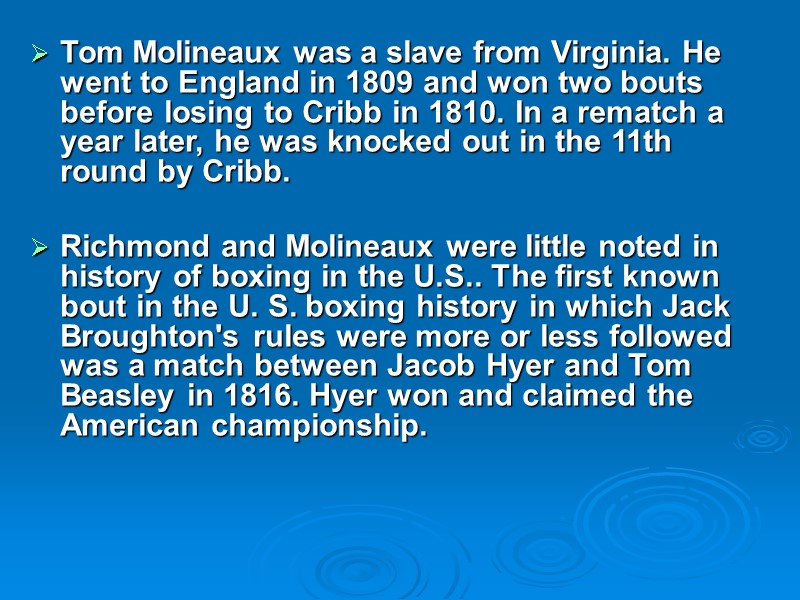
Tom Molineaux was a slave from Virginia. He went to England in 1809 and won two bouts before losing to Cribb in 1810. In a rematch a year later, he was knocked out in the 11th round by Cribb. Richmond and Molineaux were little noted in history of boxing in the U.S.. The first known bout in the U. S. boxing history in which Jack Broughton's rules were more or less followed was a match between Jacob Hyer and Tom Beasley in 1816. Hyer won and claimed the American championship.
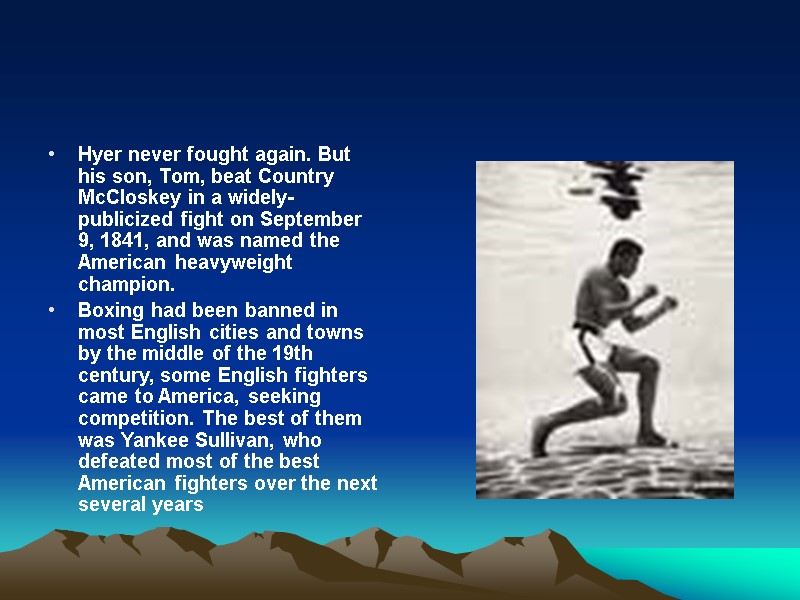
Hyer never fought again. But his son, Tom, beat Country McCloskey in a widely-publicized fight on September 9, 1841, and was named the American heavyweight champion. Boxing had been banned in most English cities and towns by the middle of the 19th century, some English fighters came to America, seeking competition. The best of them was Yankee Sullivan, who defeated most of the best American fighters over the next several years
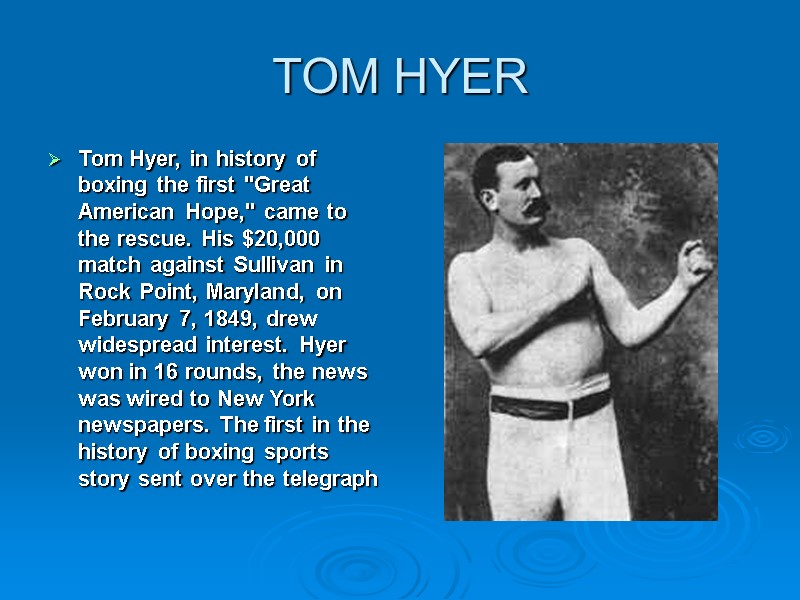
TOM HYER Tom Hyer, in history of boxing the first "Great American Hope," came to the rescue. His $20,000 match against Sullivan in Rock Point, Maryland, on February 7, 1849, drew widespread interest. Hyer won in 16 rounds, the news was wired to New York newspapers. The first in the history of boxing sports story sent over the telegraph
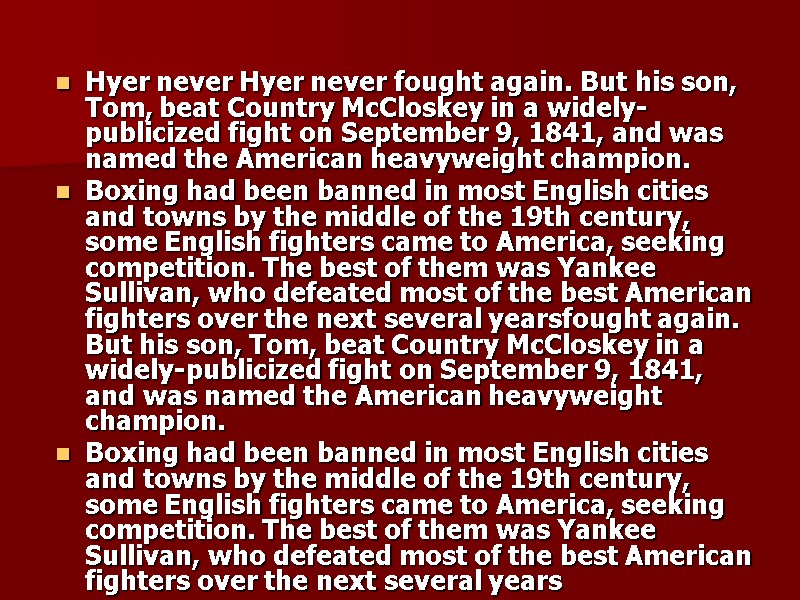
Hyer never Hyer never fought again. But his son, Tom, beat Country McCloskey in a widely-publicized fight on September 9, 1841, and was named the American heavyweight champion. Boxing had been banned in most English cities and towns by the middle of the 19th century, some English fighters came to America, seeking competition. The best of them was Yankee Sullivan, who defeated most of the best American fighters over the next several yearsfought again. But his son, Tom, beat Country McCloskey in a widely-publicized fight on September 9, 1841, and was named the American heavyweight champion. Boxing had been banned in most English cities and towns by the middle of the 19th century, some English fighters came to America, seeking competition. The best of them was Yankee Sullivan, who defeated most of the best American fighters over the next several years
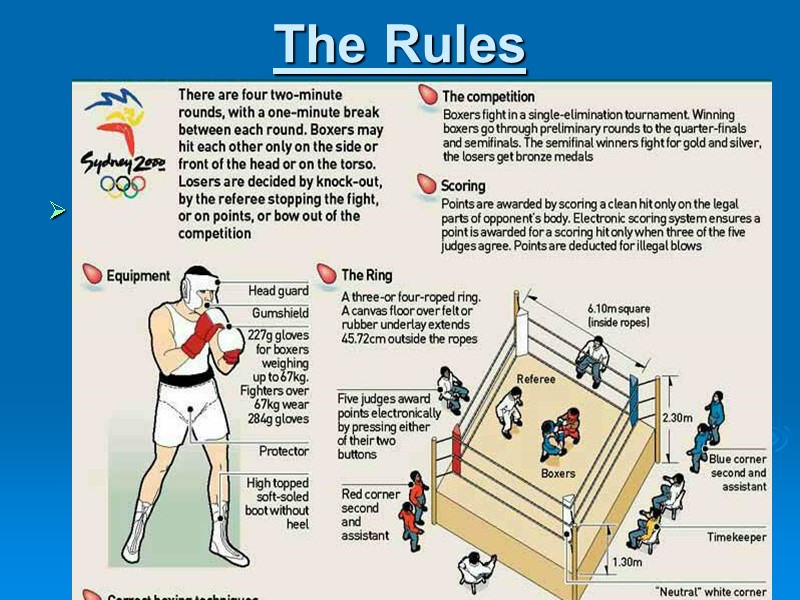
The Rules
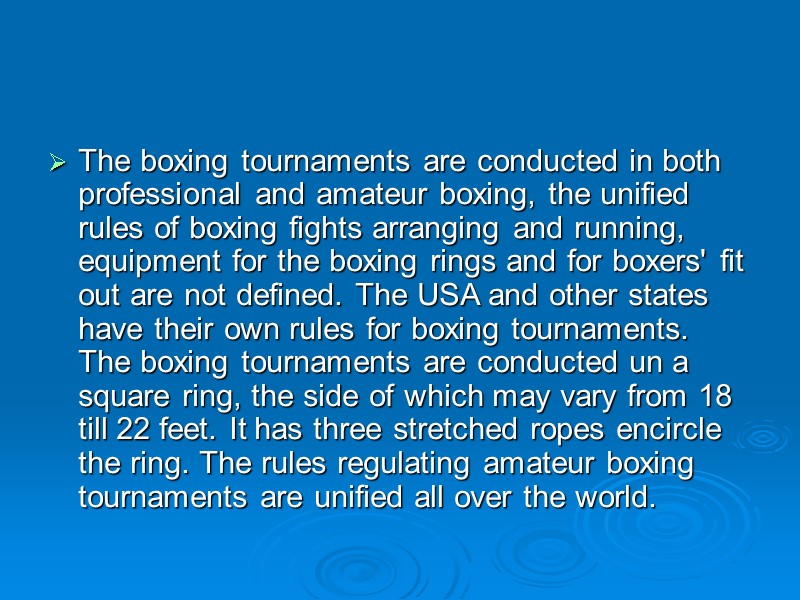
The boxing tournaments are conducted in both professional and amateur boxing, the unified rules of boxing fights arranging and running, equipment for the boxing rings and for boxers' fit out are not defined. The USA and other states have their own rules for boxing tournaments. The boxing tournaments are conducted un a square ring, the side of which may vary from 18 till 22 feet. It has three stretched ropes encircle the ring. The rules regulating amateur boxing tournaments are unified all over the world.
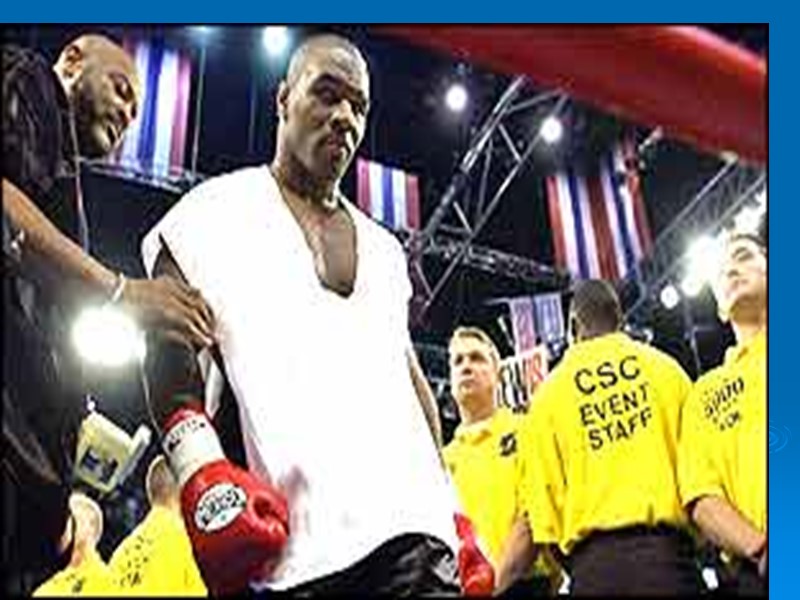
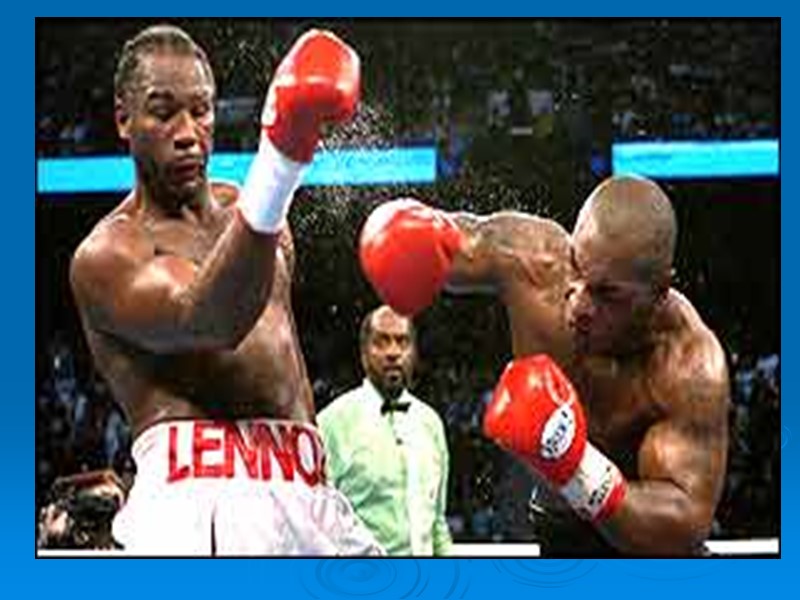

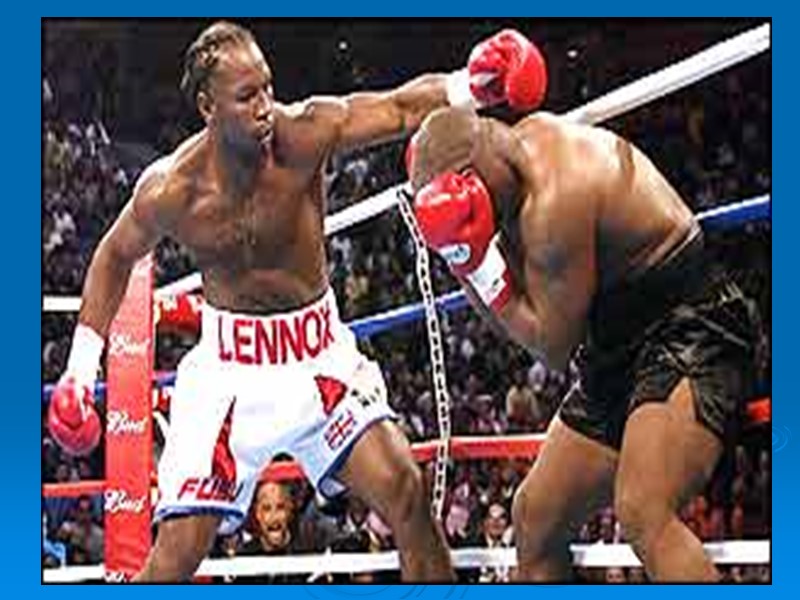
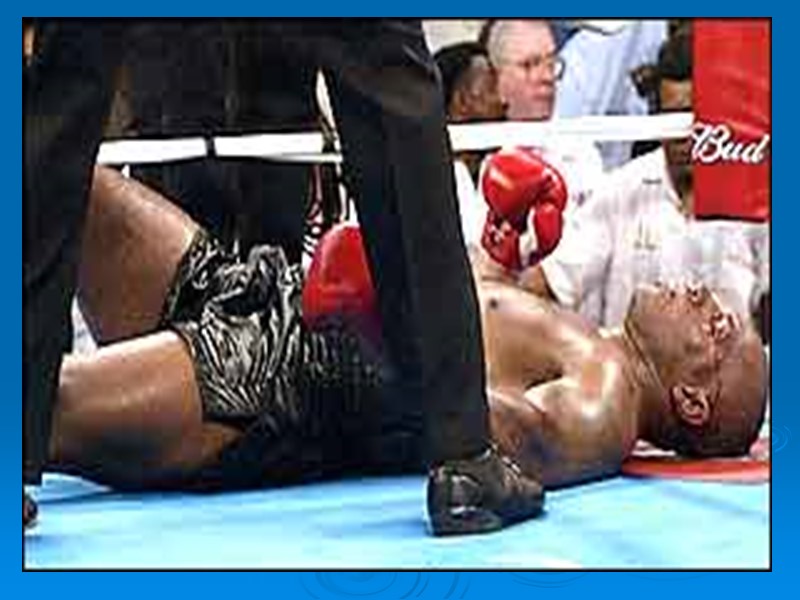
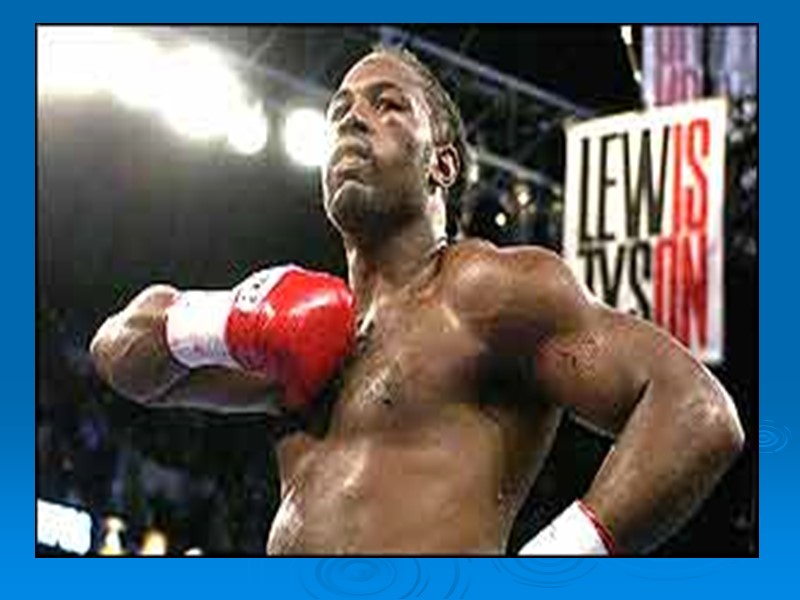

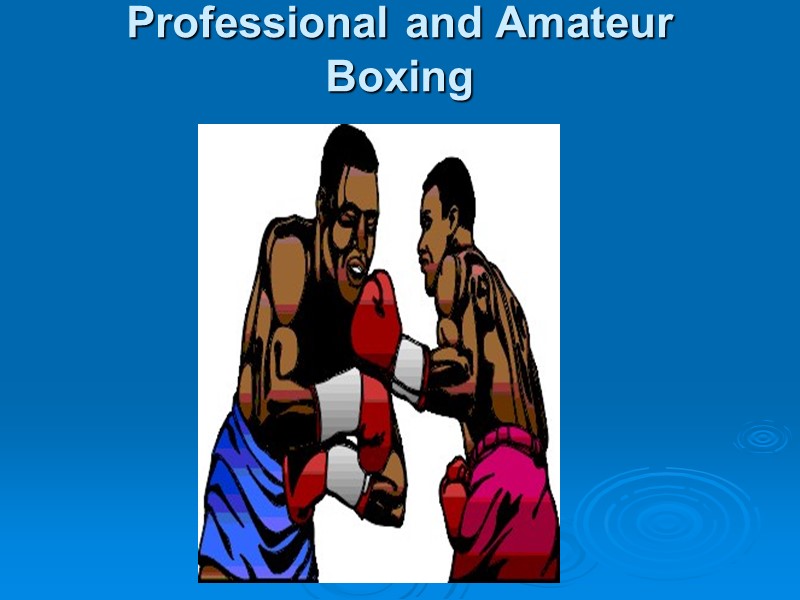
Professional and Amateur Boxing
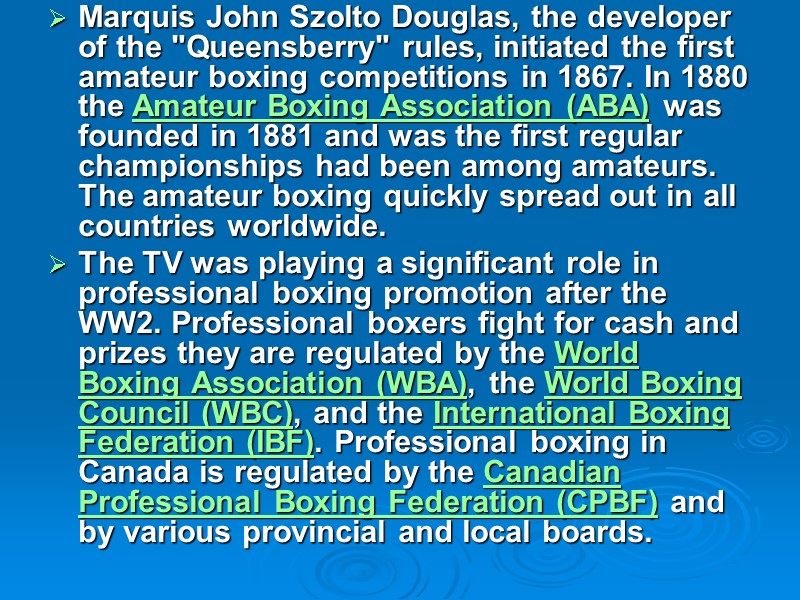
Marquis John Szolto Douglas, the developer of the "Queensberry" rules, initiated the first amateur boxing competitions in 1867. In 1880 the Amateur Boxing Association (ABA) was founded in 1881 and was the first regular championships had been among amateurs. The amateur boxing quickly spread out in all countries worldwide. The TV was playing a significant role in professional boxing promotion after the WW2. Professional boxers fight for cash and prizes they are regulated by the World Boxing Association (WBA), the World Boxing Council (WBC), and the International Boxing Federation (IBF). Professional boxing in Canada is regulated by the Canadian Professional Boxing Federation (CPBF) and by various provincial and local boards.
37854-boxing.ppt
- Количество слайдов: 18

